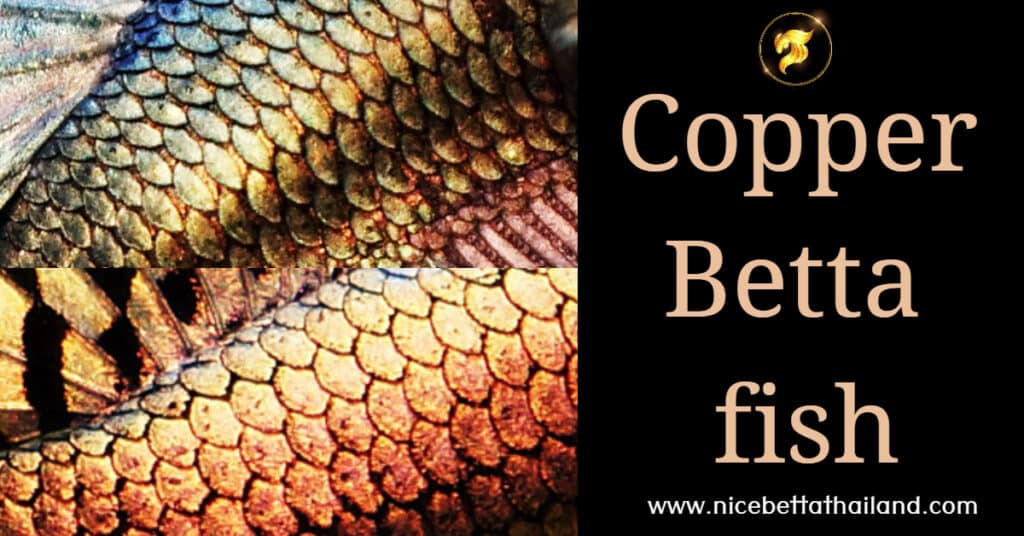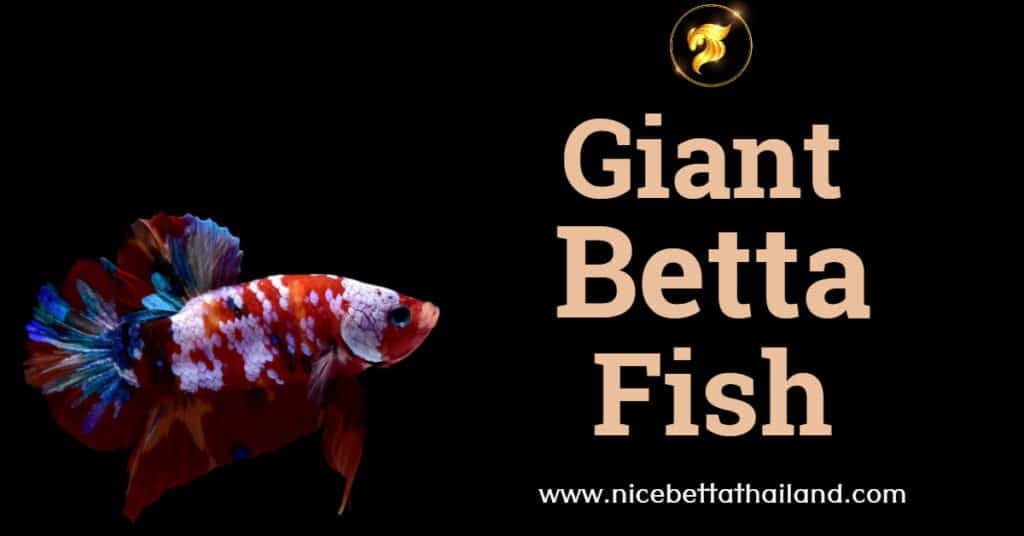The Care, Feeding and Breeding of Bettas
Betta Fish Stats
Minimum Tank Size:2.5 Gallons (10 Litres) – 5 Gallon Recommended (19 Litres)
Care Level: Easy
Water Conditions: 6-8 pH and Soft to Hard
Temperature: 23-30 °C (73-86 °F)
Maximum Size: 3 Inches (8 cm)
The fish commonly known as Siamese fighting fish – or simply as bettas, is actually made up of numerous species of fish that all share a similar body type. With that being said, most species of bettas are not widely available in the aquarium hobby, and those found in pet stores are usually from the species betta splendens.
There are numerous myths surrounding the natural habitat of the betta, with some people claiming that they can be found living in puddles formed from a single footprint. While that may sound poetic, most bettas inhabit rice paddies, slow moving streams and deep drainage ditches – all of which are significantly larger than a footprint.
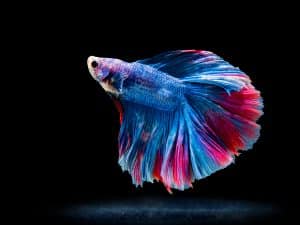
Betta Fish – The Care, Feeding and Breeding of Bettas (Siamese Fighting Fish)
June 21, 2014 by Robert Brand 8 Comments
The myth may have originated from the fact that bettas can survive in very small bodies of water for short periods of time. The way that they survive is through the use of a special labyrinth organ, which allows them to breathe air. This adaption also allows them to survive in tiny cups that you seem them in at pet stores, though most don’t remain healthy for long in the cups.
All species of bettas remain small in the home aquarium, and betta splendens only grow to a maximum length of around 3 incesh (8 cm). You may occasionally see ones larger than this, but that is the exception and not the rule.
Bettas are capable of living for up to five years in the home aquarium, but most rarely see their first birthday due in no small part to the cramped, filthy conditions they are kept in. There have been unconfirmed reports of bettas living up to eight years, but it seems that the average lifespan of a well taken care of betta is between 3-5 years.
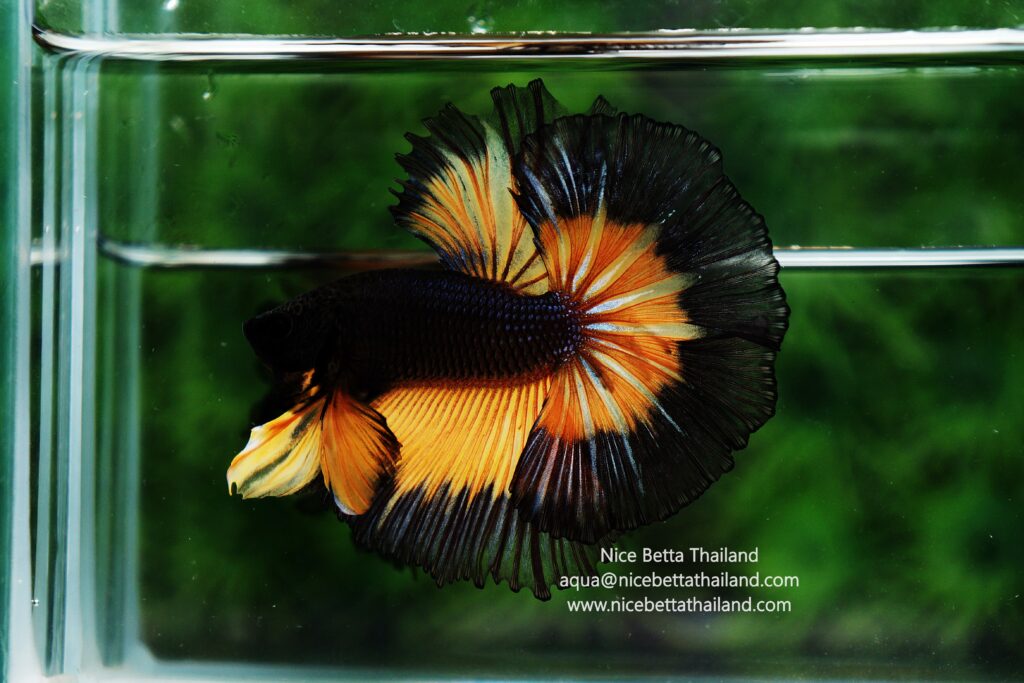
Housing
Bettas endure far worse conditions in the home aquarium than nearly any other fish, with perhaps the exception of goldfish. Most bettas spend their short and miserable lives in small, unheated containers, where they barely have room to turn around.
Many bettas quickly die in these environments and there is a theory that they may succumb to fatty liver disease. Fatty liver disease is caused in part by their inability to swim and also from well-intentioned overfeeding.
Betta Fish – The Care, Feeding and Breeding of Bettas (Siamese Fighting Fish)
June 21, 2014 by Robert Brand 8 Comments
Betta Fish Stats
Minimum Tank Size:2.5 Gallons (10 Litres) – 5 Gallon Recommended (19 Litres)
Care Level: Easy
Water Conditions: 6-8 pH and Soft to Hard
Temperature: 23-30 °C (73-86 °F)
Maximum Size: 3 Inches (8 cm)
The fish commonly known as Siamese fighting fish – or simply as bettas, is actually made up of numerous species of fish that all share a similar body type. With that being said, most species of bettas are not widely available in the aquarium hobby, and those found in pet stores are usually from the species B. splendens.
There are numerous myths surrounding the natural habitat of the betta, with some people claiming that they can be found living in puddles formed from a single footprint. While that may sound poetic, most bettas inhabit rice paddies, slow moving streams and deep drainage ditches – all of which are significantly larger than a footprint.
The myth may have originated from the fact that bettas can survive in very small bodies of water for short periods of time. The way that they survive is through the use of a special labyrinth organ, which allows them to breathe air. This adaption also allows them to survive in tiny cups that you seem them in at pet stores, though most don’t remain healthy for long in the cups.
All species of bettas remain small in the home aquarium, and B. splendens only grow to a maximum length of around 3 incesh (8 cm). You may occasionally see ones larger than this, but that is the exception and not the rule.
Bettas are capable of living for up to five years in the home aquarium, but most rarely see their first birthday due in no small part to the cramped, filthy conditions they are kept in. There have been unconfirmed reports of bettas living up to eight years, but it seems that the average lifespan of a well taken care of betta is between 3-5 years.
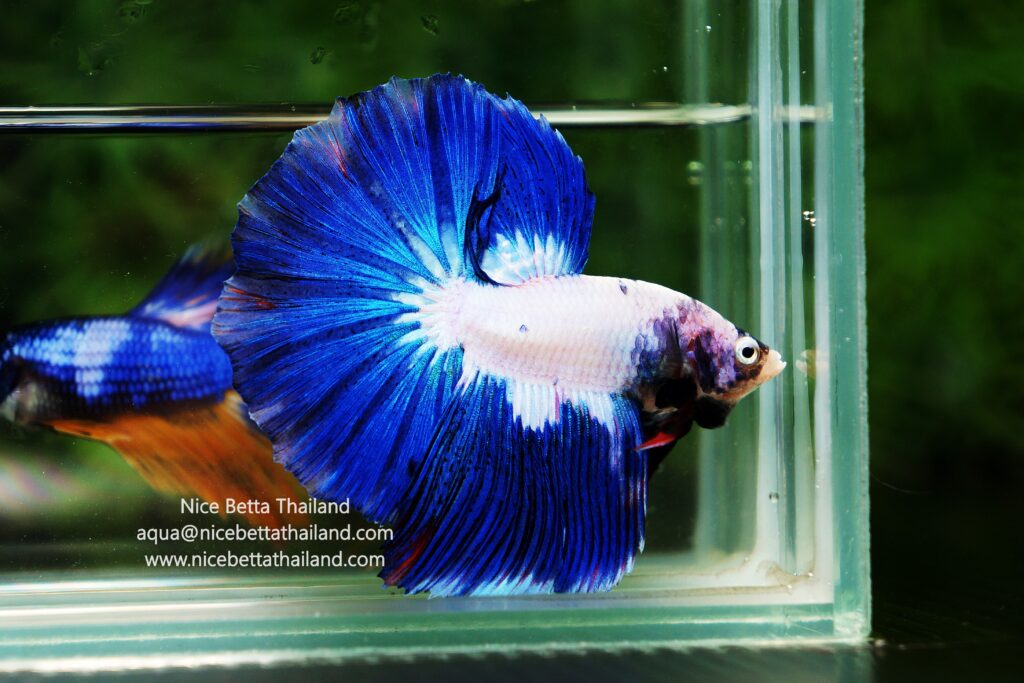
Bettas endure far worse conditions in the home aquarium than nearly any other fish, with perhaps the exception of goldfish. Most bettas spend their short and miserable lives in small, unheated containers, where they barely have room to turn around.
Many bettas quickly die in these environments and there is a theory that they may succumb to fatty liver disease. Fatty liver disease is caused in part by their inability to swim and also from well-intentioned overfeeding.
Even many of the so called “betta containers” and bowls supposedly designed for bettas are far too small for them. It’s actually quite easy to provide a healthy environment for bettas and most will thrive if provided with a 5 gallon (19 litre) heated tank. While a 2.5 gallon (10 litre) tank also works well, it can be difficult to find a proper heater for this size tank. And an aquarium containing a betta should always be heated.
It’s also important to remember that for many years bettas were referred to as Siamese fighting fish. Males will not tolerate another betta (male or female) in their tank, and in smaller aquariums they will often fight to the death. There have been some reports of people keeping several male bettas in very large tanks (55 gallons +), but it’s generally not worth the risk.
Female bettas are a different story, and with a bit of work you can keep several female bettas in tank together. The minimum tank size for this to work is 29 gallons (110 litres), with larger tanks making it much easier.
In larger aquariums females will form a harem – with one dominant female and a clear pecking order beneath her. There may still be some fighting, so keep an eye on the bettas and remove any that become injured for treatment.
Bettas don’t require much in the way of filters, and a simple sponge filter or HOB (hang on back) filter are usually more than adequate. It’s important to keep any current to a minimum if you are using an HOB filter, since most male bettas are weighed down by ornamental fins and are not strong swimmers.
I would strongly recommend choosing an Aquaclear Power Filter for a betta tank. This filter combines excellent filtration with a durable design, and it will keep your tank sparkling clear for years to come. You can also read the Aquarium Tidings Aquaclear Filter Review here.
Male bettas will also appreciate a place in the aquarium to rest near the surface. This can be provided through artificial plants or aquatic plants, and there are also numerous commercial products for this. If you choose to use something artifical, you first need to ensure that it doesn’t have any sharp edges, as bettas fins are extremely delicate.

Feeding
In the wild betta fish primarily feed on insects, small crustaceans, larvae and small fish. This diet should be replicated as closely as possible in the home aquarium, and can be done through feedings of live and frozen foods.
While there is a huge market for speciality betta foods, it seems to be hit and miss whether a betta will accept them. Some will happily gobble down betta pellets and flake foods, while others will completely ignore them even after days of starvation.
For the most part, I feed my bettas frozen foods, with occasional offerings of live food. Their favorite frozen foods are bloodworms, blackworms, daphnia and brine shrimp. When it comes to live foods, they love mosquito larvae (illegal to culture in many areas), blackworms, wingless fruit flies and daphnia.
It’s important not to overfeed your betta, especially if it is kept in a small aquarium where it doesn’t have much room to swim. Any frozen food cubes should be cut into small pieces and they should only be fed once a day or once every other day.
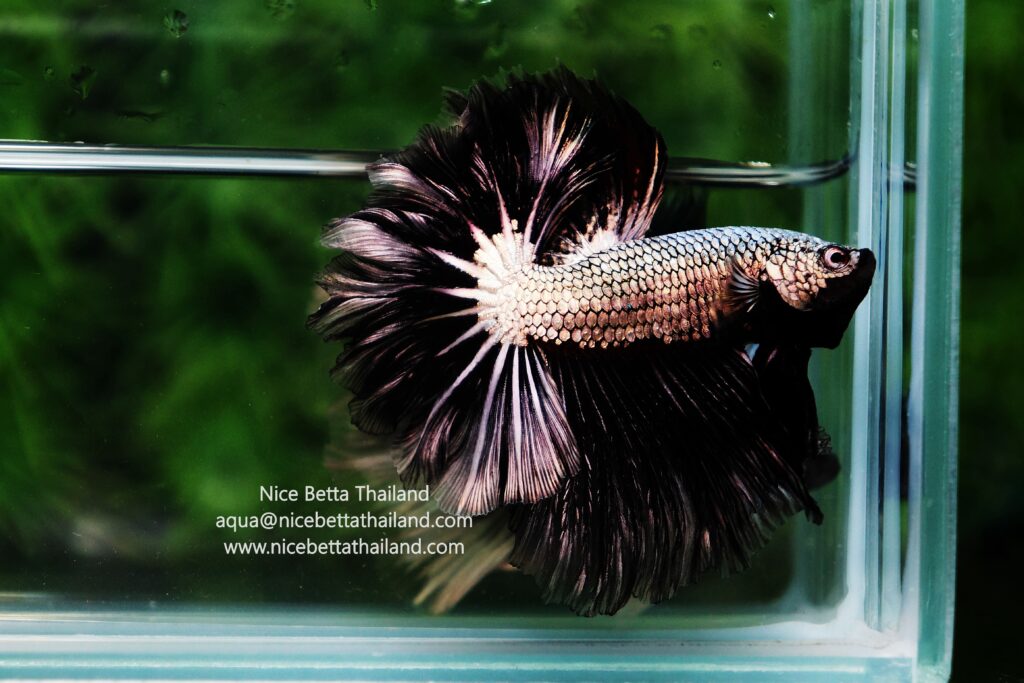
Breeding
Breeding bettas can be difficult and can also results in an enormous amount of fry. So you should always be prepared to deal with a betta population explosion and know how you will deal with all the fry before you breed them.
One of the biggest problems that you will encounter when breeding bettas, is that if you place a male and female in a tank together, they will immediately set out to murder each other. To get around this problem, you will have to set up two small tanks side by side (they have to be able to see each other) and another larger tank for them to breed in when they’re ready.
After a young male and female betta have been placed in a position where they can view each other, they should be conditioned for at least a week by feeding them live food (frozen food may also work). During this time, the female will begin to noticeably plump up as she swells with eggs.
After they have been conditioned for at least a week, both fish should be moved to the breeding tank. The tank should have a bare bottom and the only filtration should be a simple sponge filter. Ideally, the tank should be kept at around 80 degrees, but they will still spawn in lower temperatures.
When the female is introduced to the breeding tank, the male will begin to flare at her and may show some aggression. If the male attacks the female or causes any significant injury to her fins, they should both be removed until the female has healed from her wounds. Once she has recovered, you can try introducing them to the breeding tank again.
If the introduction of the female to the breeding tank is successful, there may still be some aggression from the male, but it should be short lived. The male will quickly divert all of his attention towards building a bubble nest for the eggs. After the nest has been completed, the male will usually mate with the female by wrapping his fins around her and squeezing out her eggs.
Immediately after breeding has been completed, the female should be removed from the tank. The male should remain in the tank, and he will scour the tank looking for eggs to place in the bubble nest. Once all the eggs are in the bubble nest, he will guard the nest diligently until the fry are free swimming.
The eggs will begin to hatch after 48 hours, and the newly hatched fry can be fed microworms, vinegar eels or baby brine shrimp. If you can find them, walter worms or banana worms are also excellent choices – but they can be relatively difficult to find.
The male betta should be removed as soon as the fry are free-swimming and the fry can be raised in the breeding tank, or moved to another tank if required. At around 4 weeks of age, the fry will begin to become aggressive towards each other, and should be removed to their own containers at this point.
Some people choose to leave the female fry together, but from past experience it can start to get messy keeping that many bettas together – even juvenile ones. If you choose to keep the females together, they should still be removed to their own containers around the 10 week mark.
Feeding and Breeding of Bettas Summary
Nice Betta Thailand Farm Emphasis is placed on the importance of maintaining water conditions, providing proper food, and breeding techniques to ensure that the betta fish are healthy and colorful. If the instructions are followed correctly, the breeder can enjoy raising the betta fish and may even succeed in breeding them.
Looking for Rare betta fish?
If this article Feeding and Breeding of Bettas was useful to you You can leaving a 5-star reviews for It’s an encouragement. For us make encourage us in our research. Research information about betta fish for to present useful information further

Also we have group talk about betta fish for sale and share any new tip take care information on Web3 socialFi group

Right now we have betta fish doctor help every bettas lover by top breeder in Thailand to cure or share more tip on Animalverse social
If your bettas fish sick or need tip to treat help or join event prize with AVC Token
Let’s join the group many top breeder will help to answers in betta fish community
More tip :
15 Common Betta Fish Diseases Prevention and Treatment
The most expensive betta fish in the world.
All of Betta Fish A Guide on Patterns, Color in the world



